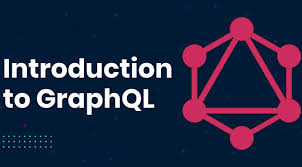Introduction to GraphQL
 Jackson Morara
Jackson Morara
Introduction
GraphQL is a query language for APIs and a runtime for executing those queries with existing data.
Background
Developed by Facebook, it allows clients to request exactly the data they need, reducing over-fetching and under-fetching issues common in REST APIs. GraphQL operates on a single endpoint, uses a strongly typed schema, and supports real-time data updates through subscriptions.
It offers efficiency, flexibility, and evolvability, but can introduce complexity, caching challenges, and potential server strain if not managed properly.
Overall, GraphQL is a powerful tool for building modern web and mobile applications.
GraphQL is a query language for APIs and a runtime for executing those queries with your existing data. It provides a more efficient, powerful, and flexible alternative to the traditional REST API. Here’s a comprehensive look at GraphQL:
Key Features of GraphQL
1. Declarative Data Fetching: Clients can specify exactly what data they need, and the server responds with precisely that data. This eliminates over-fetching and under-fetching issues common in REST APIs.
2. Single Endpoint: Unlike REST, which often requires multiple endpoints for different resources, GraphQL uses a single endpoint to access all the data. This simplifies the API structure and reduces the complexity of client-server interactions.
3. Strongly Typed Schema: GraphQL APIs are defined by a schema that specifies the types of data that can be queried.
This schema acts as a contract between the client and server, ensuring that both parties understand the data structure.
- Real-time Data with Subscriptions: GraphQL supports real-time data updates through subscriptions, allowing clients to receive updates when data changes on the server.
5. Introspection: GraphQL APIs are self-documenting. Clients can query the API to understand what operations are available and what data can be fetched, making it easier for developers to work with the API.
How GraphQL Works
GraphQL operates on a single endpoint where clients send queries. These queries are structured in a way that mirrors the shape of the JSON data the client expects. The server processes the query, fetches the necessary data, and returns it in the requested format.
Example Query
Here’s a simple example of a GraphQL query:
graphql{
user(id: "1") {
name
email
posts {
title
content
}
}
}
In this query, the client requests a user’s name, email, and their posts' titles and content. The server will respond with a JSON object containing only this data.
Advantages of GraphQL
Efficiency: GraphQL allows clients to request only the data they need, reducing the amount of data transferred over the network. This can lead to faster load times and improved performance, especially on mobile devices or slow networks.
Flexibility: With GraphQL, clients have the power to specify exactly what data they want, and in what structure. This means developers can easily adjust queries to meet changing requirements without needing server-side changes.
Evolvability: GraphQL APIs can evolve over time without breaking existing clients. New fields and types can be added to the schema without affecting current queries, allowing for seamless updates and feature additions.
Challenges of GraphQL
1.Complexity: Implementing a GraphQL server can be more complex than a REST API, especially for developers new to the technology.
2.Caching: Traditional caching strategies used in REST APIs may not work with GraphQL, requiring new approaches to caching.
3.Overhead: The flexibility of GraphQL can lead to complex queries that put a strain on the server if not managed properly.
Conclusion
GraphQL is a query language and runtime for APIs that offers a more efficient, flexible, and powerful alternative to REST APIs.
While it provides significant advantages in terms of efficiency, flexibility, and evolvability, it can also introduce complexity, caching challenges, and potential server strain if not managed effectively.
In case you missed the session, here is a recorded version:
Introduction to GraphQL
Reach Us
Subscribe to my newsletter
Read articles from Jackson Morara directly inside your inbox. Subscribe to the newsletter, and don't miss out.
Written by

Jackson Morara
Jackson Morara
Always learning, building and exploring new tech. A Kenyan by birth and a developer by nature.